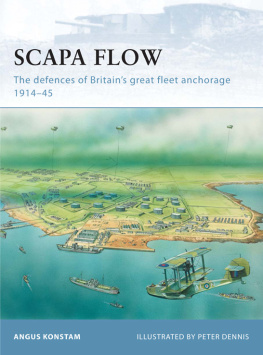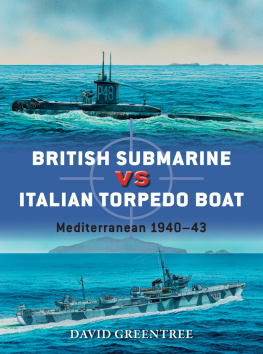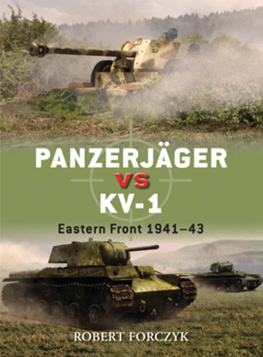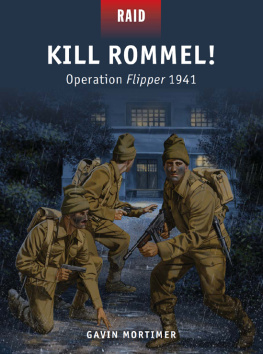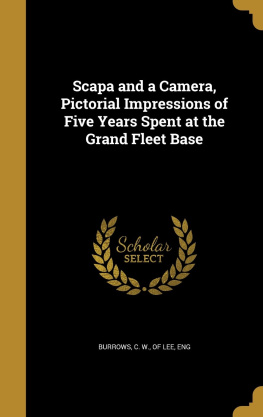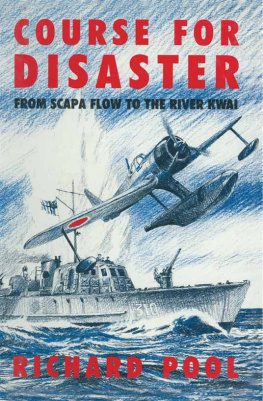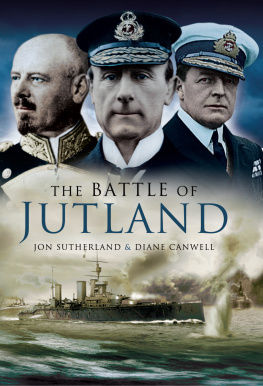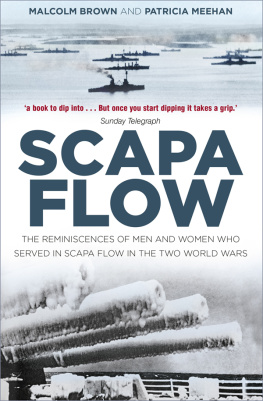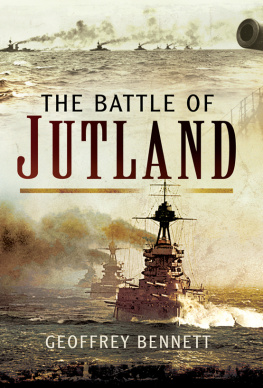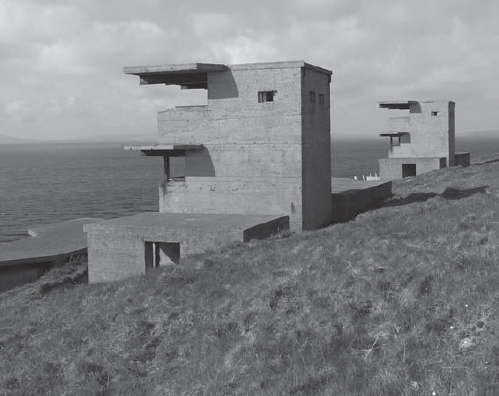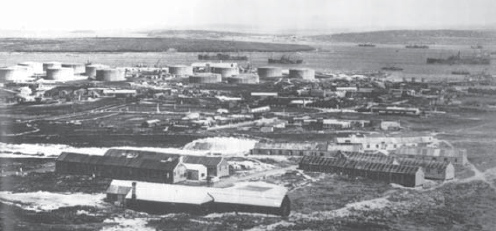FORTRESS 85
SCAPA FLOW
The defences of Britains great fleet anchorage 191445
| ANGUS KONSTAM | ILLUSTRATED BY PETER DENNIS |
Series editors Marcus Cowper and Nikolai Bogdanovic
CONTENTS
SCAPA FLOW: THE DEFENCES OF BRITAINS GREAT FLEET ANCHORAGE1914-45
INTRODUCTION
During the two great conflicts of the 20th century the natural harbour of Scapa Flow served as Britains main naval base, and consequently it was a place of immense strategic importance. It was from Scapa that the Royal Navy sallied to do battle with the German High Seas Fleet in 1916, and in World War II British warships left this safe haven to hunt down the Bismarck and the Scharnhorst. Even though it lay far from any enemy-occupied ports, Scapa was the cornerstone of Britains defences in both wars, providing a secure base that helped the Royal Navy maintain its control of the seas.
Scapa Flow lies in the middle of Orkney, an archipelago lying just off the north-eastern tip of Scotland. The largest of these islands, known by Orcadians as the Mainland, protects the northern half of the anchorage, while to the south a string of smaller islands encircles Scapa Flow like a green necklace. The largest of these is Hoy, a sparsely inhabited island whose heather-covered hills and rough moorland is unlike the rest of Orkney, which presents a more pleasing and fertile landscape. In fact, in good weather Orkney can be a place of incredible beauty, with clear blue seas, lush green fields and an almost magical light. By contrast an Orkney winter can be bleak, cold and miserable. For tens of thousands of servicemen during two world wars, Orkney must have seemed like the end of the earth, a far-flung corner of Britain that was completely removed from anywhere they had ever encountered. This explains the love-hate relationship these servicemen had with their wartime home.

The reason for the defences: the battlecruiser HMS Hood, lying at anchor in Scapa Flow, photographed from beneath the guns of another capital ship shortly before the outbreak of World War II. The vessel on the far left is the battlecruiser HMS Renown. (Stratford Archive)
Lyness Naval Base, photographed from the summit of Wee Fea Hill. The base contained a naval headquarters, communications centres, a major fuel depot, a boom defence workshop, repair workshops, stores and recreational facilities. (Private collection)
Of course, this vital naval base had to be defended. This meant covering its approaches with coastal batteries, stationing troops in Orkney to repel an enemy landing, and the blocking of entrances using booms, anti-submarine nets, blockships and other obstacles. In World War II the defenders faced the new threat of air attack, and so Scapa Flow was eventually ringed by anti-aircraft batteries and searchlight stations, and protected by fighter aircraft based on Orkney airfields. The result of all this was to create one of the most extensive integrated land, sea and air defence systems of World War II, a near impregnable base that allowed the Royal Navy to perform its task without worrying about the safety of its own anchorage. However, all this took time to create, and in both world wars the Germans launched attacks on Scapa Flow before these defences were complete. In 1939 one such attack by a U-boat resulted in the sinking of a British battleship, anchored inside the seemingly impregnable defensive cordon. This book tells the story of these defences, and of the men who manned them.
First though, we need to explain the meaning of the name. In the 8th century AD Orkney was colonized by the Vikings, and consequently many Norse words found their way into the Orkney lexicon. Scapa comes from the Norse word skalpr (a poetic term for a longboat), and skalpei (ship isthmus a place where ships could be hauled over a short stretch of land). Scapa Bay is one and a quarter miles (two kilometres) away from the waters of Kirkwall Bay, and the flat valley between the two bays forms a natural isthmus that the Vikings would have used in this way. Flow comes from the Norse word flot, meaning a substantial body of water, or a wide fjord. That seems a perfect description for the Flow.
Finally, as an author Ive written dozens of books for Osprey, including three titles in this Fortress series. However, Scapa Flow is special. Although I wasnt born in Orkney (I arrived there when I was three), I was brought up in the islands and as a peedie (little) boy I explored the derelict pillboxes and gun emplacements, or scrambled over the blockships and barriers. My bedroom windows overlooked Scapa Bay, and I was brought up amid the constant reminders of the part played by Orkney in two world wars. Consequently this book has given me great pleasure to research and write.
CHRONOLOGY
| 1812 | Scapa Flow first recommended to the Admiralty as a rendezvous base for warships. |
| 1816 | Completion of first fortifications designed to protect Scapa Flow. |
| 1860 | Orkney Royal Garrison Artillery formed, and volunteers trained in coastal gunnery. |
| 1898 | British Channel Fleet used Orkney as a base during its summer manoeuvres. |
| 1905 | First Sea Lord Jackie Fisher recommends Scapa Flow be turned into a naval base. |
| 1908 | HMS Triton conducts extensive survey of Scapa Flow for the Admiralty. |
| 1910 | The Grand Fleet uses Scapa Flow as a temporary base. First modern coastal guns enter service in Orkney batteries. |
| 1913 | War Office turns control of the nascent Orkney defences over to the Admiralty. Scapa Flow officially designated as a major naval base. |
| 1914 |
| June | First elements of the Grand Fleet sent to Scapa Flow. |
| August | Outbreak of World War I.
Naval guns landed from fleet to bolster defences. |
| September | U-boat scare prompts fleet to put to sea until defences can be improved. |
| November | Work begins on coastal defence batteries overlooking main entrances. |
| 1915 |
| February | Anti-submarine nets put in place, followed by anti-shipping booms. |
| April | 19 blockships scuttled across the eastern entrances of Scapa Flow. |
| July | Indicator loops and minefields laid around Hoxa Sound and Hoy Sound. King George V visits Scapa Flow. |
| 1916 |
| 30 May | Grand Fleet sails from Scapa Flow to make contact with the German fleet. |
| 31 May | Battle of Jutland. |
| 5 June | HMS Hampshire sunk by mine off Marwick Head, Orkney, claiming the life of Field Marshal Lord Kitchener. |
| 1917 |
| 9 July | The battleship HMS Vanguard blows up at her moorings in Scapa Flow. |
| 1917 |
| December | US 6th Battle Squadron joins the Royal Navy in Scapa Flow. |
| 1918 |
| 28 October | UB-116 sunk in Hoxa Sound. |

